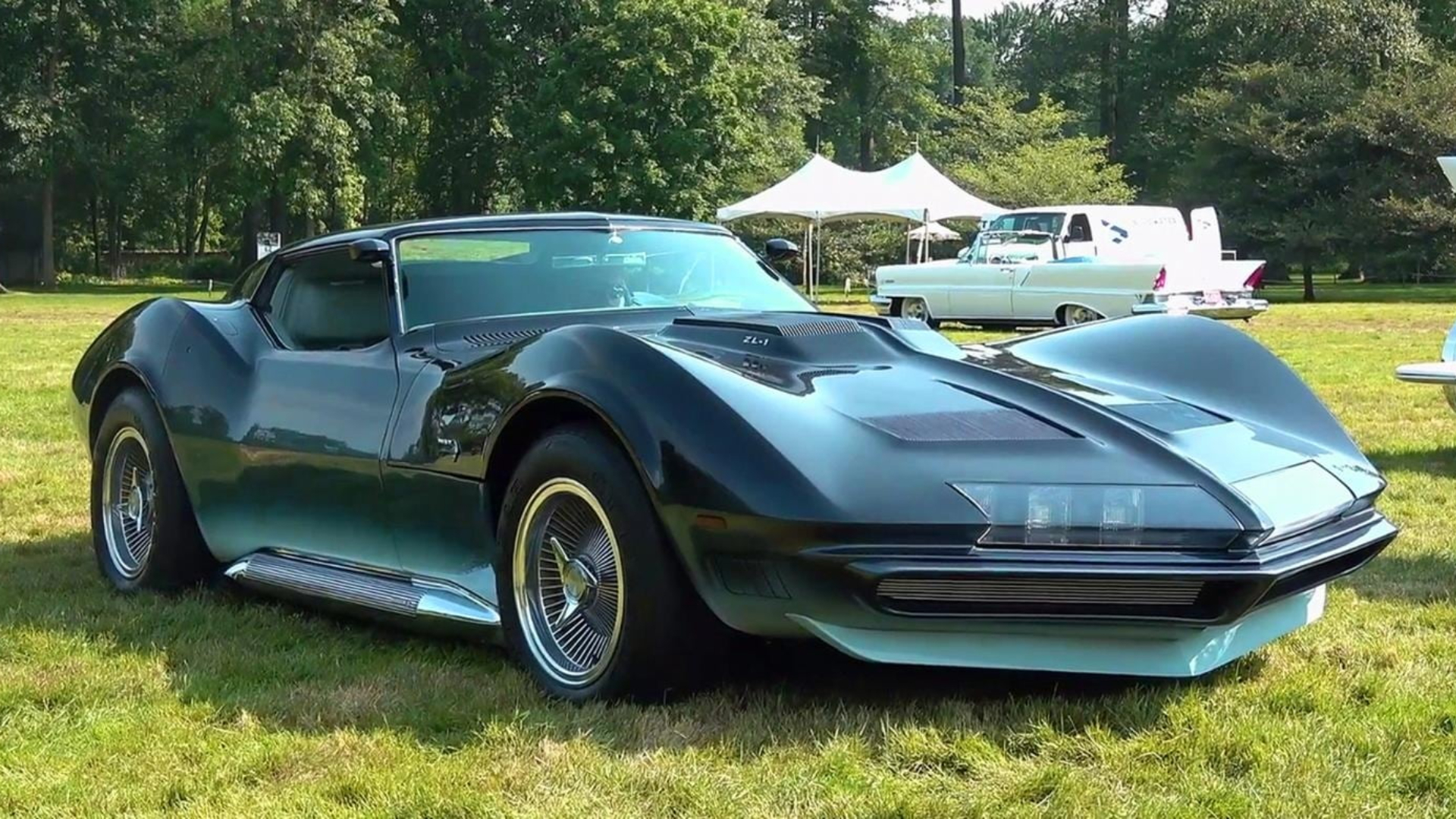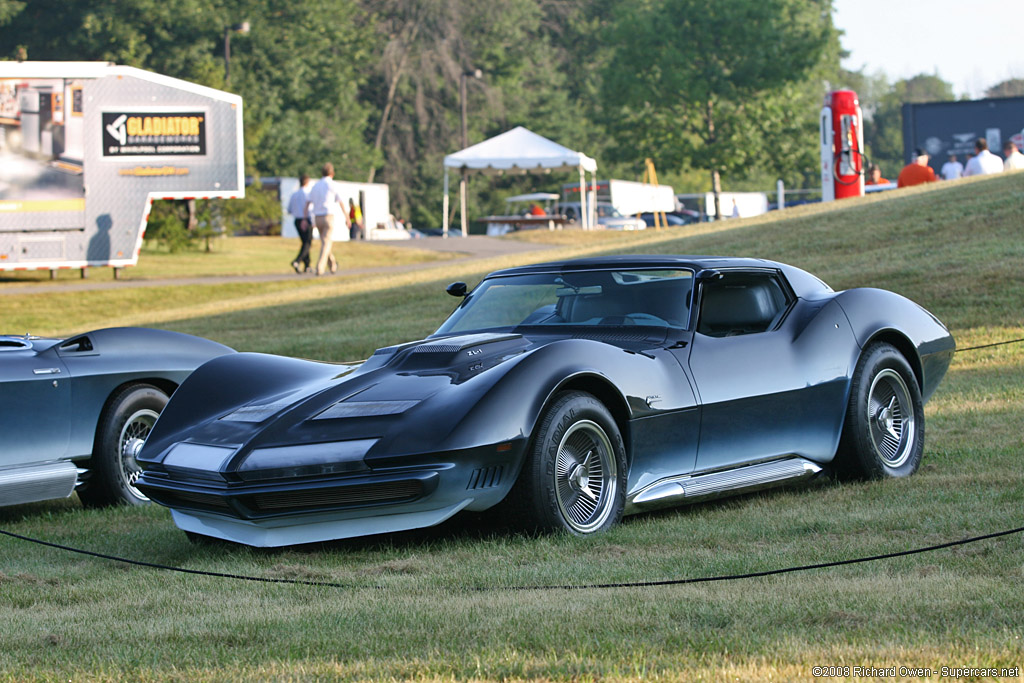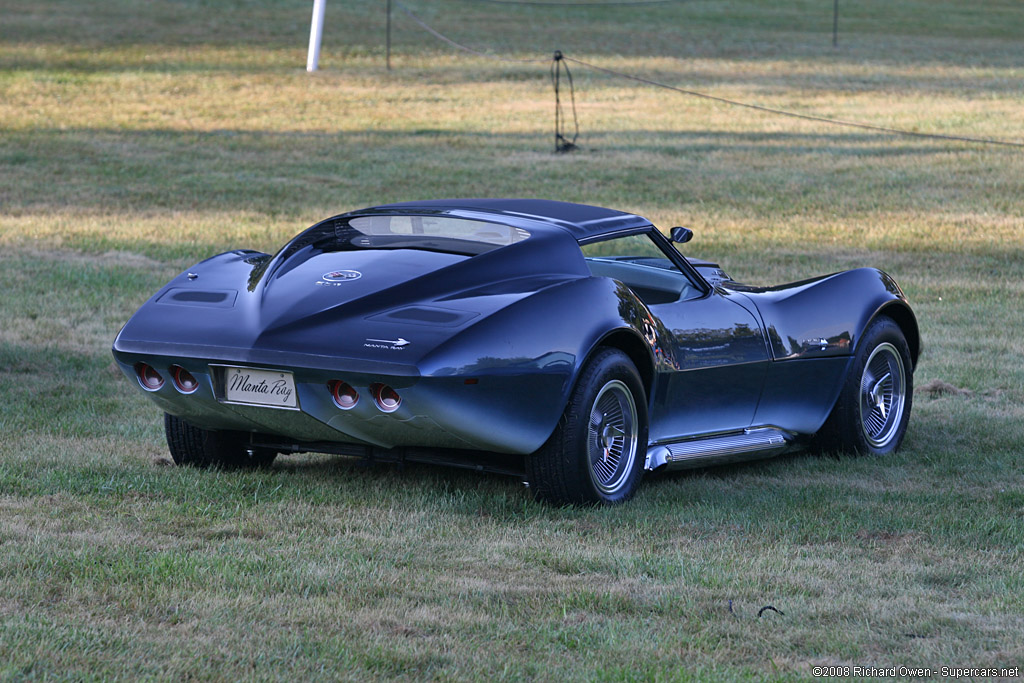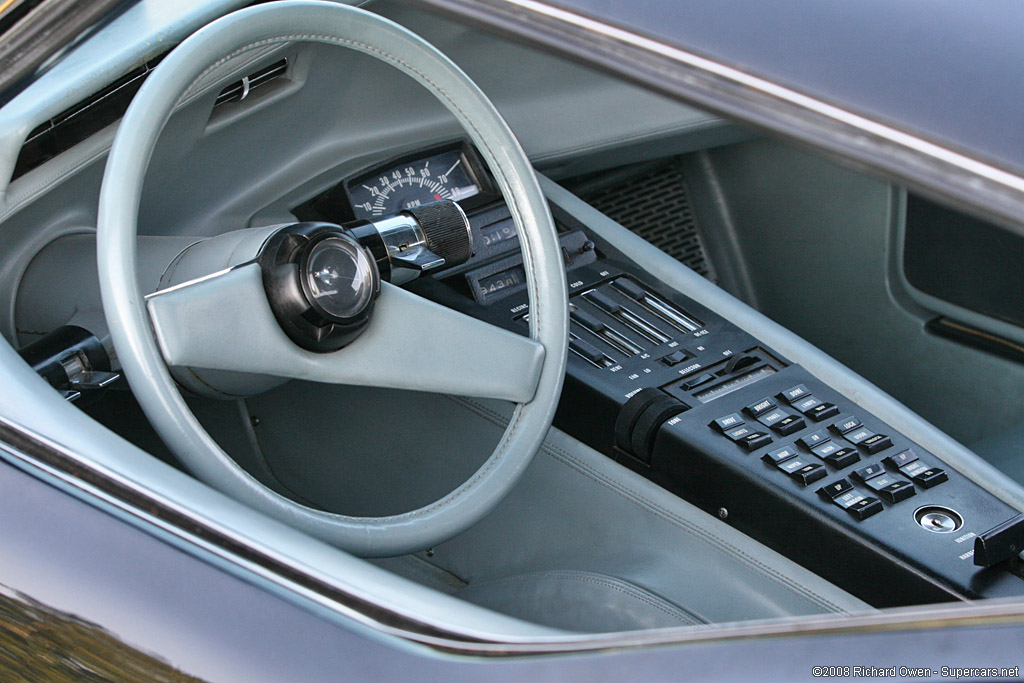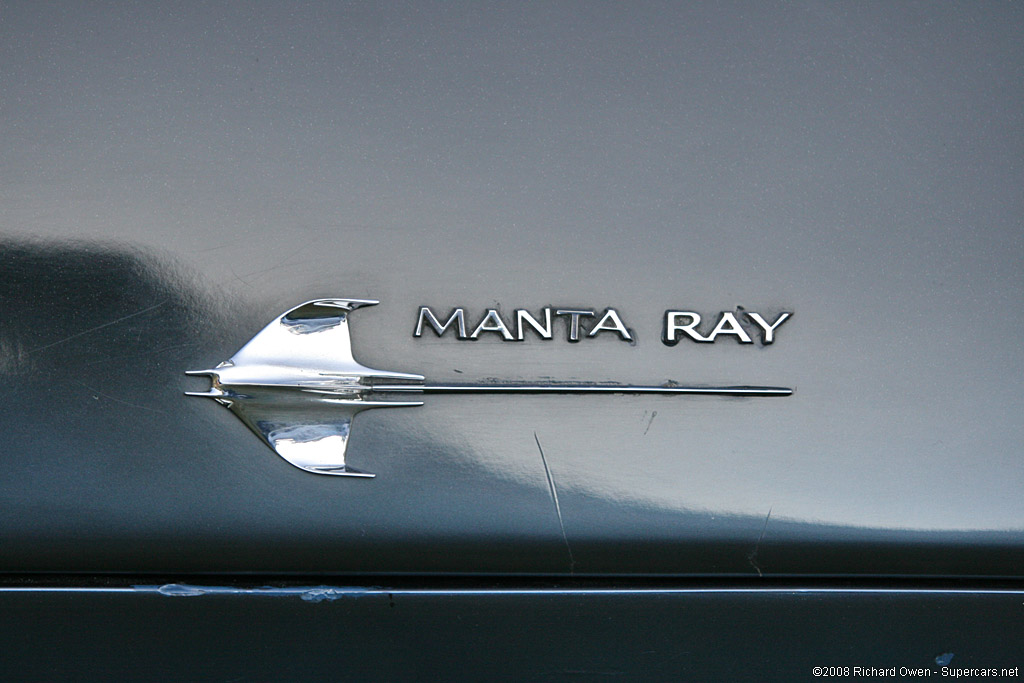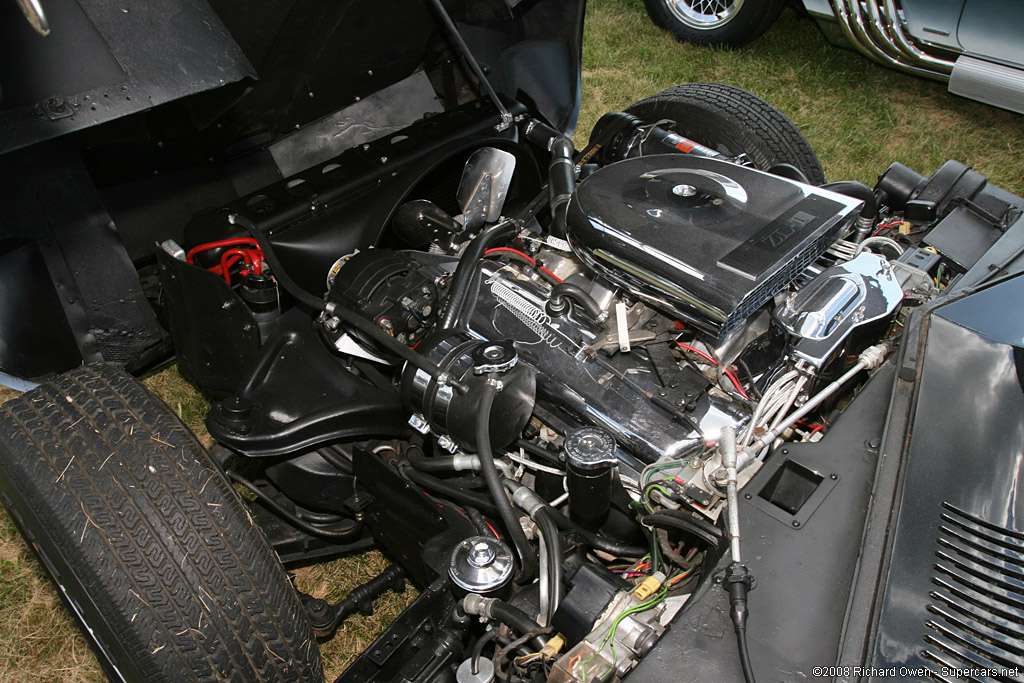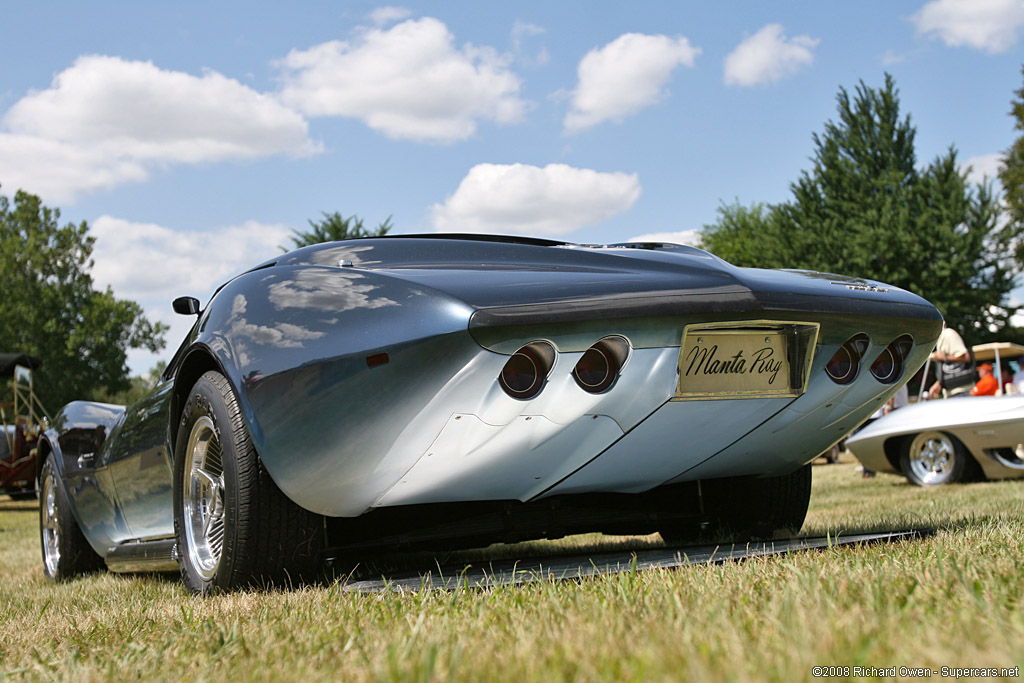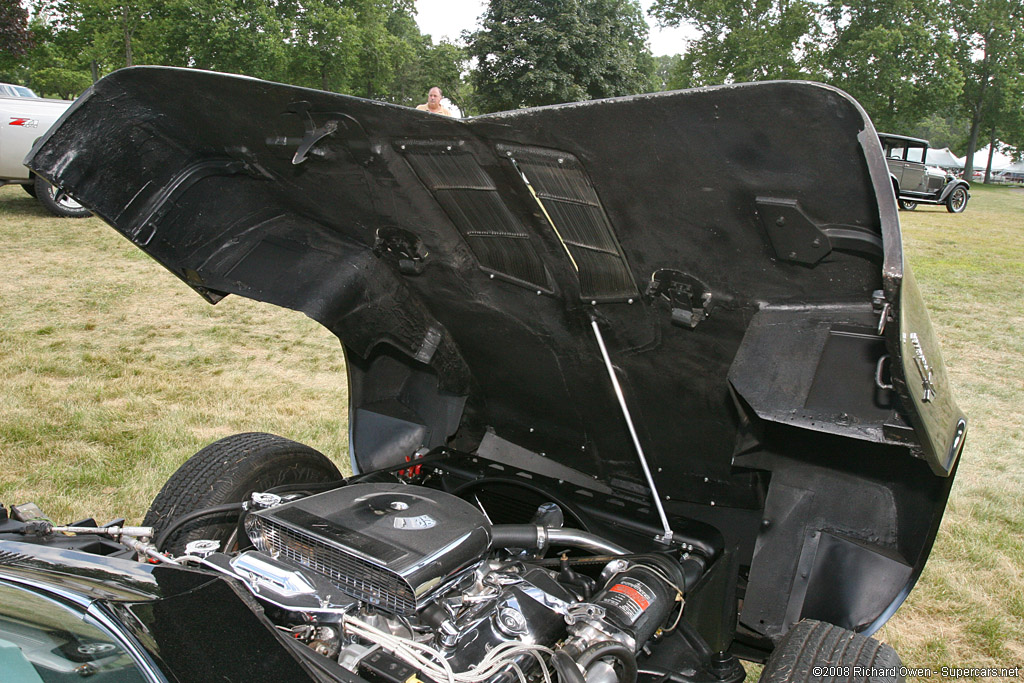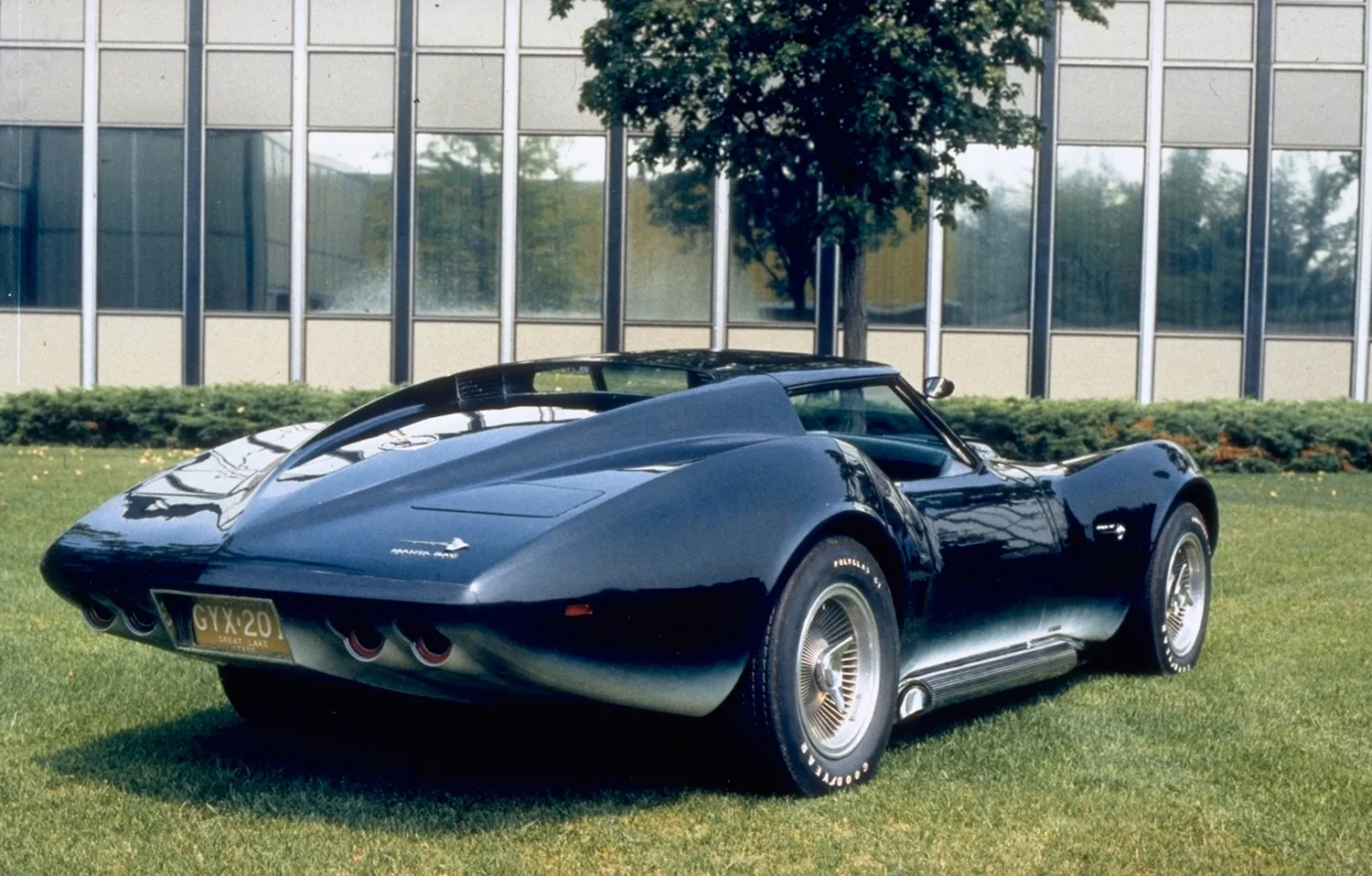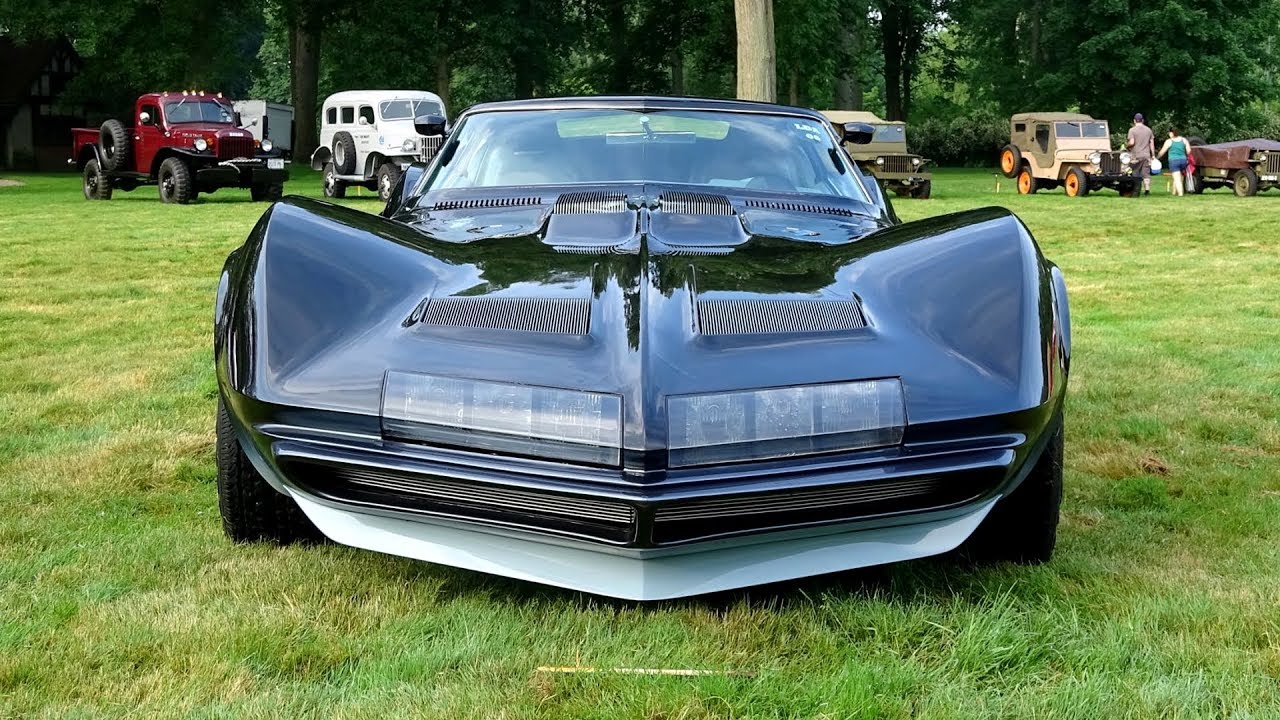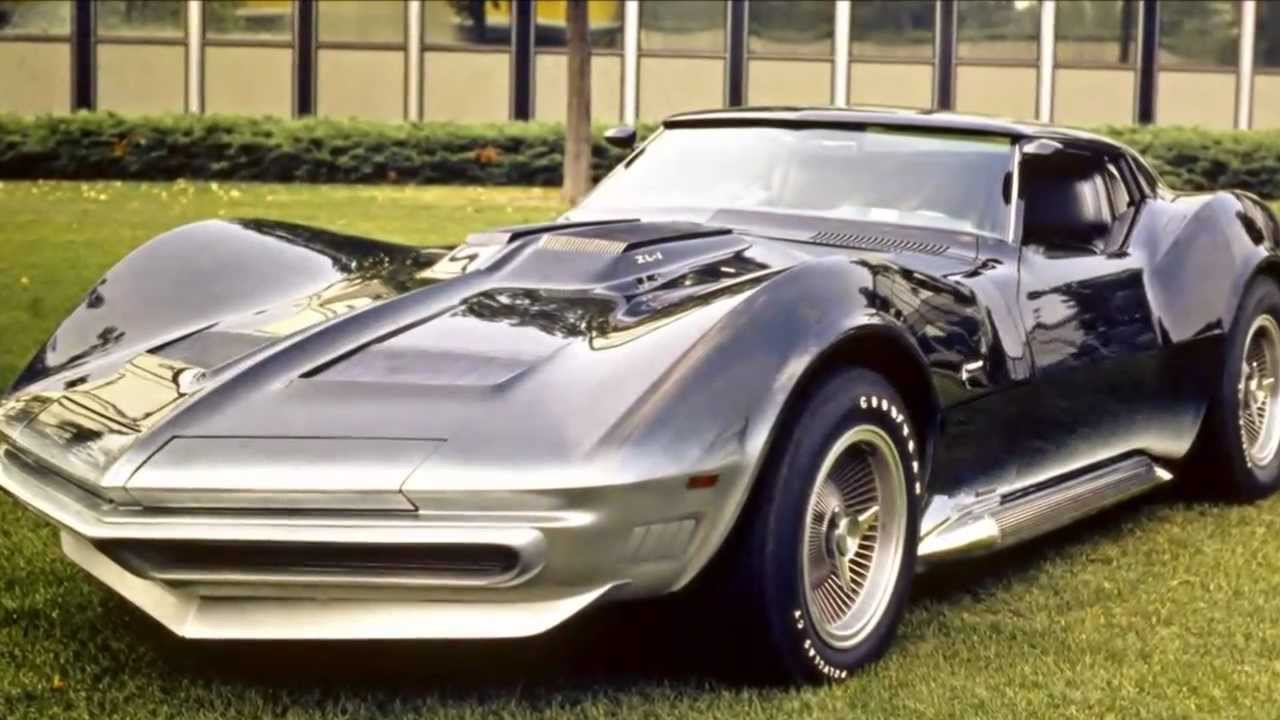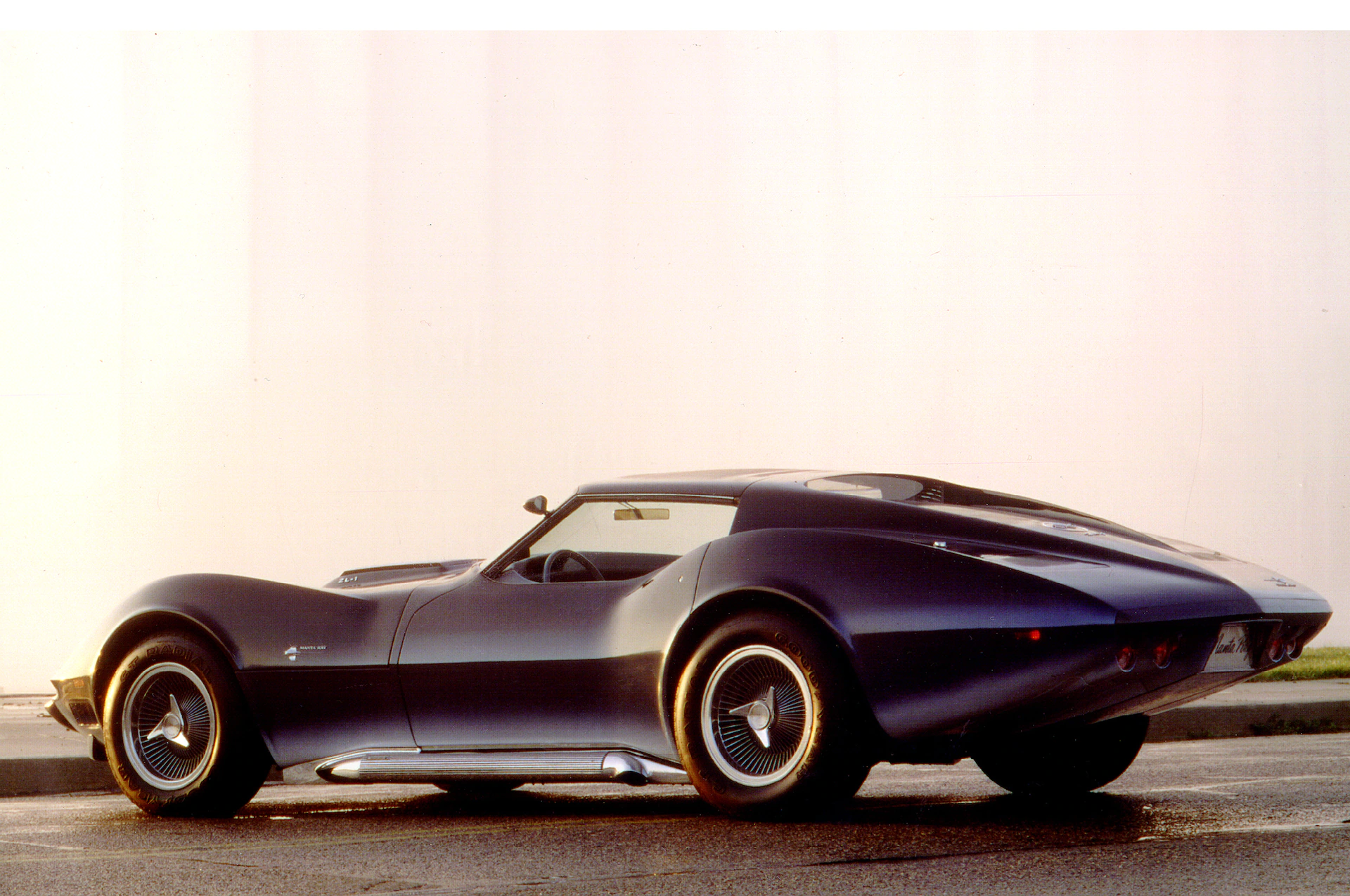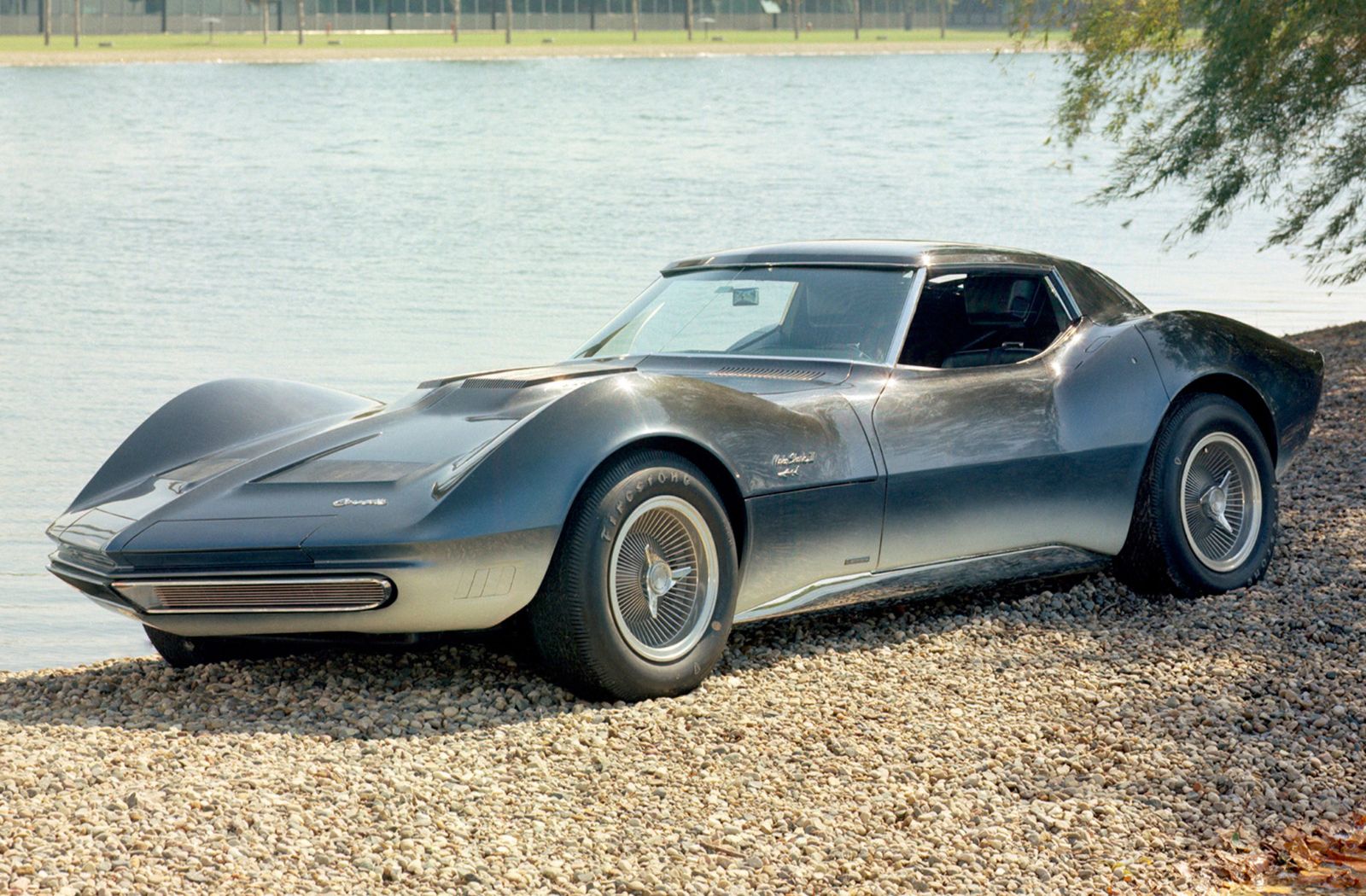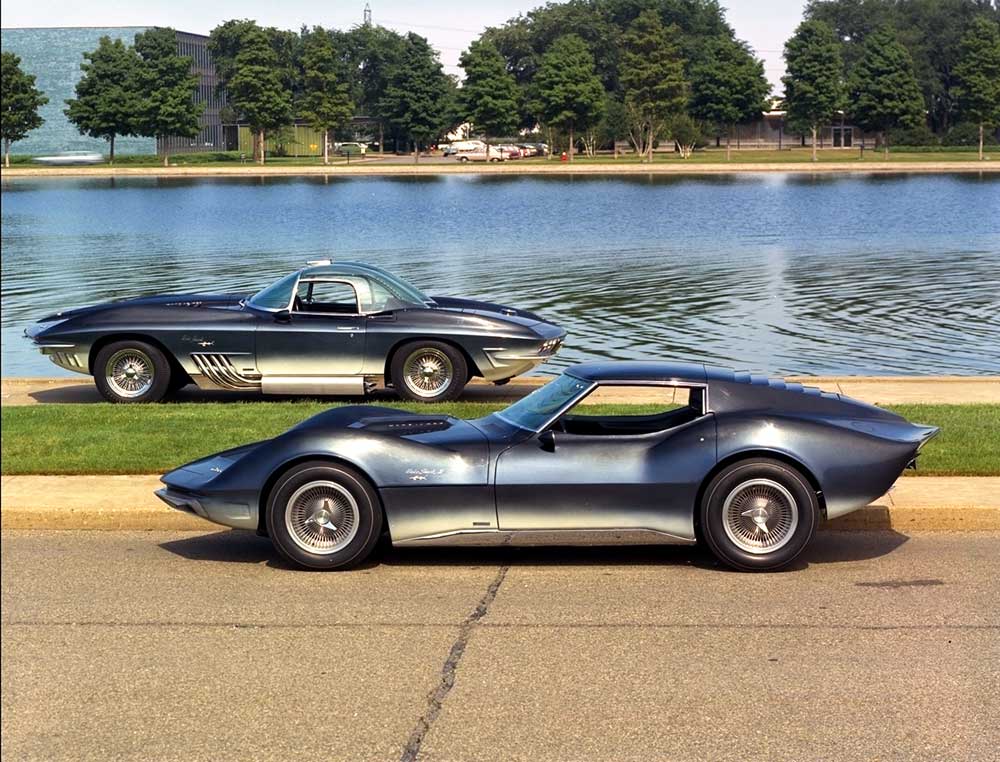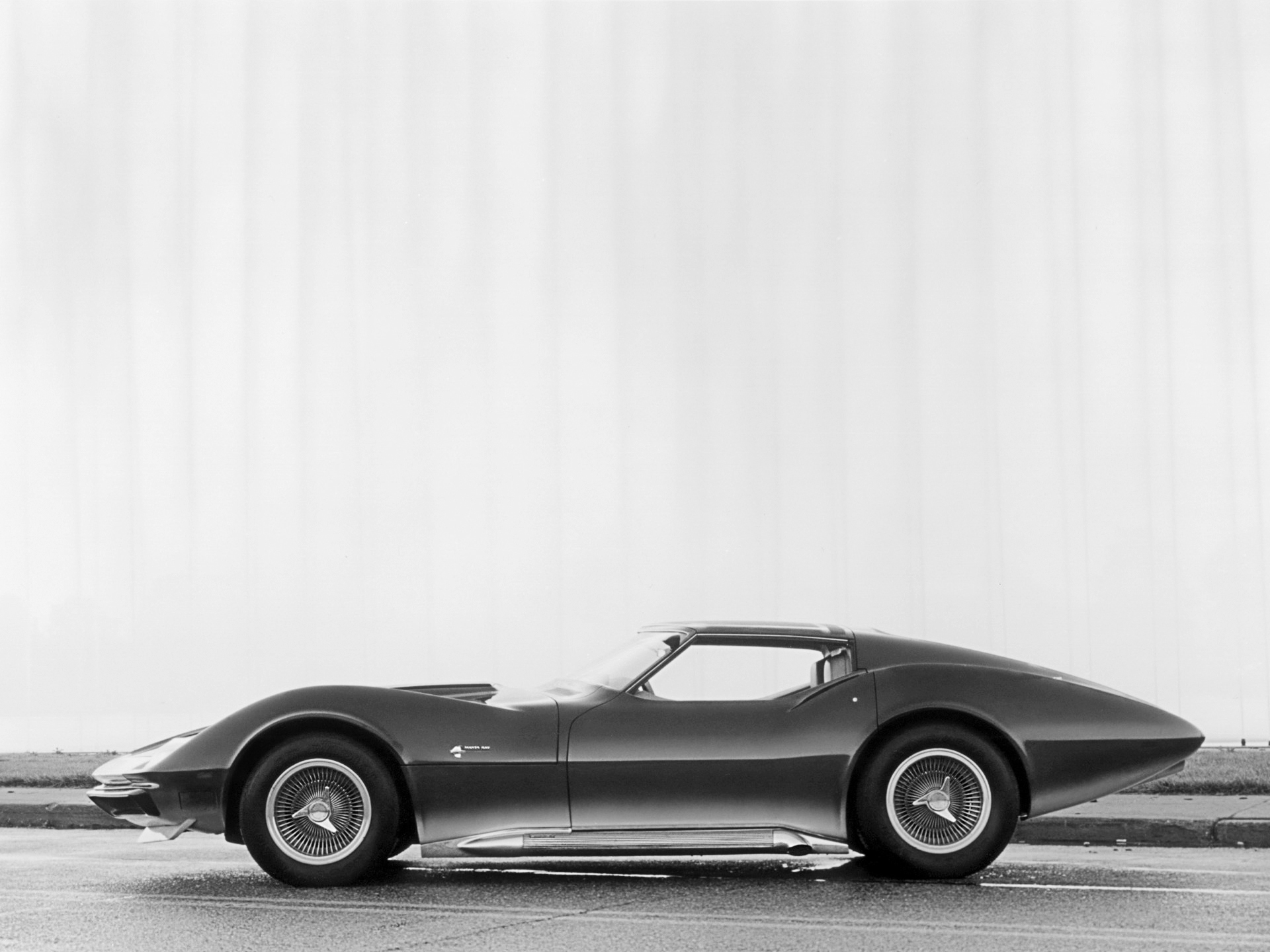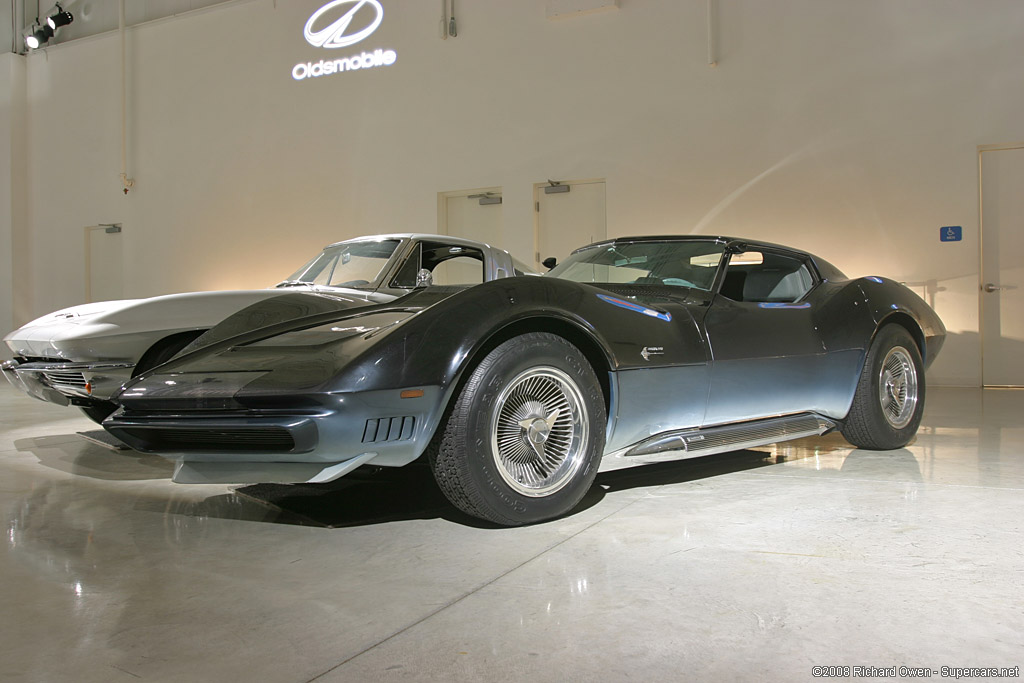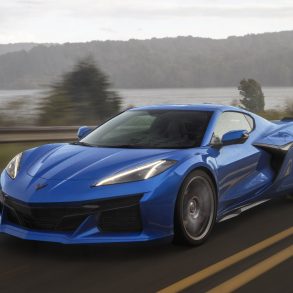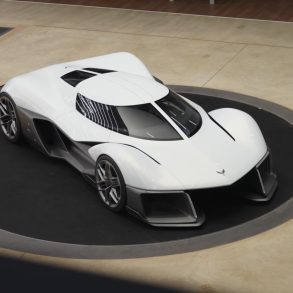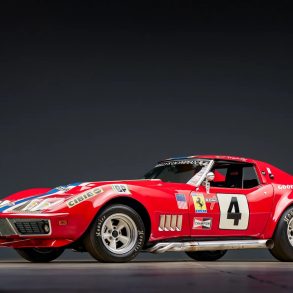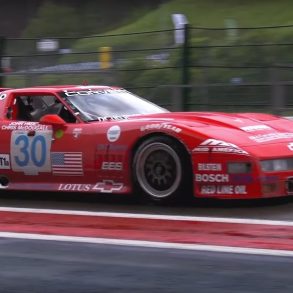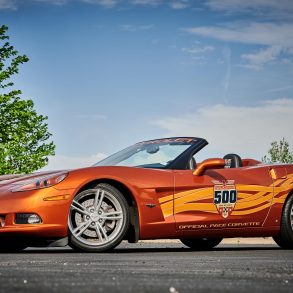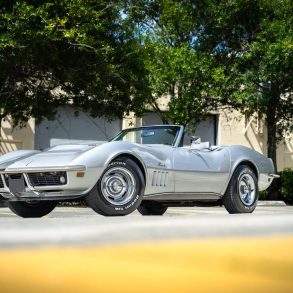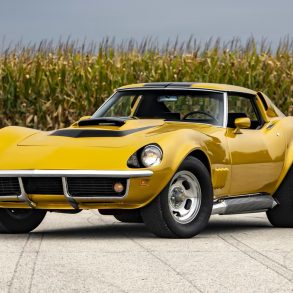1969 Chevrolet Corvette Manta Ray
The Manta Ray was actually the 1965 Mako Shark II (XP-830) with a few upgrades, so it featured many of the Mako II’s outward features, such as side exhaust and a lower-body (along the rocker panels) silver paint job. The front end had a pointed chin spoiler and the headlights used 2 banks of 3 quartz-hallogen lights. The covers for the side pipes eventually showed up as an option on the ‘69 Corvette Most dramatic was the all-new roof line. The Stingray-like pointed roof with its louvers was replaced with a long, pointed, scooped out design that was very cool.
The Manta Ray also packed the new, lightweight, all-aluminum ZL-1 427ci engine which produced 430 horsepower. Even though the shark-inspired ‘68 production Corvette was in showrooms, the Manta Ray was just too cool to retire just yet. A gunslit vertical window replaced the louvered fastback rear window. Hard braking caused flaps on the rear deck to rise, reflecting light from upward facing stop-lamps (a feature first shown on the original Shark).
More Details
Four years after the original Mako Shark concept foreshadowed the design of the next-generation Corvette that debuted in 1963, the Mako Shark II provided an early glimpse of the third-generation Corvette design, which was introduced for the 1968 model year.
Also like the first Mako Shark show car, the second was influenced by design chief Bill Mitchell’s affinity for deep sea fishing – in this car, the sleek, swept look of a manta ray. The concept featured a one-piece, front-hinged front end that opened to reveal not only the engine, but much of the front chassis and suspension. The rear bumper was retractable, too, offer more parking-lot protection when extended. The rear end also featured an adjustable rear wing.
Inside, the Mako Shark II contained very advanced controls and features for its day, including remote control operation for the automatic transmission, a digital readout for the speedometer and fuel gauge and stereo speakers in the seat headrests. There were 17 electric motors for the cabin’s various functions, at a time when even power seats were rare.
Like many of Chevrolet’s concepts of the era, the Mako Shark II enjoyed time on the show circuit and was reborn a few years later with styling updates – and a new name: Manta Ray. It debuted in 1969.
Transforming the Mako Shark II into the Manta Ray included the addition of a front spoiler was added, changes to the grille and the “side pipe” exhausts were redesigned. The rear design changed, too, with a flying buttress-style appearance replacing a series of horizontal slats behind the rear window. The “new” Manta Ray also received a ZL-1 427-cubic-inch big-block V-8 engine.
This car has retained its Manta Ray styling since 1969.


